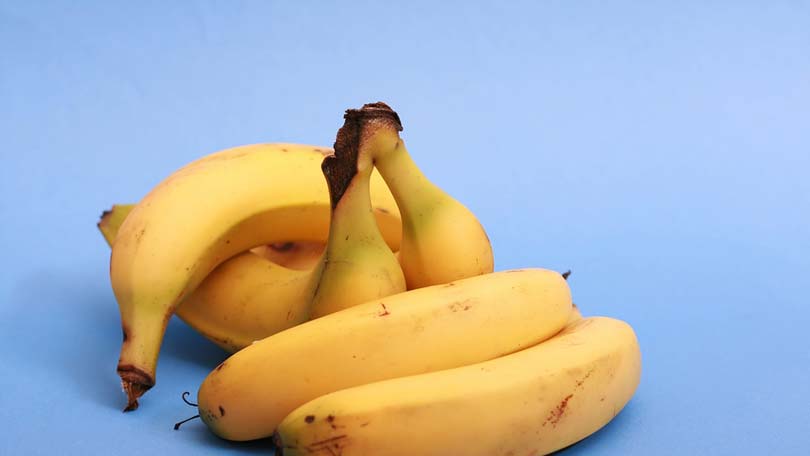Whether it’s sliced atop a bowl of cereal, mashed and infused throughout a hearty loaf of banana bread, or creamed into custard in a meringue pie, the banana is a versatile and beloved fruit.
Bananas are one of the largest food crops in the world, ranking fourth after rice, wheat, and corn. In North America alone, the per capita banana consumption is 29 pounds!
Indigenous to southeastern Asia, bananas thrive in tropical regions and are available year-round. Leading banana producers in the world include Ecuador, Costa Rica, Philippines, and Columbia. Major banana suppliers to the United States include Columbia, Costa Rica, Ecuador, Guatemala, Honduras, Nicaragua, and Panama.
Bananas are actually part of the same botanical family that includes the lily and orchid. There are about a thousand varieties of bananas, although the type that is familiar to most of us is the Cavendish or Giant Cavendish. It defines what most of us think of when we hear the word banana – smooth yellow skin, creamy pale flesh, all rolled up in a neatly rounded crescent shape.
(The Cavendish is sometimes called the sweet banana. Its relative, the plantain, is a dietary staple in many cultures.)
When shopping for bananas, look for brightly colored, plump fruit with firm, blemish-free flesh. Some brown spotting of the skin is fine and will not affect the quality. You should buy bananas when they have a bit of green remaining at their ends, because they will ripen quickly.
Store bananas at room temperature. If you must refrigerate bananas to prolong their lifespan, be aware that they will turn dark brown or black. If the bananas are not ripe enough when you bring them home, you can speed up the process by placing them in a paper bag. Bananas emit ethylene, a gas that hastens ripening. For a speedier result, you can add another ethylene-emitting fruit, such as an apple or pear.
Archeological evidence gathered in New Guinea indicates that bananas may have originated in that region as far back as 8000 B.C. The first written account of bananas is from 600 B.C. Buddhist works, and the earliest banana plantation was documented in 200 A.D. China. Explorers brought bananas with them in their travels throughout other countries, and the word banana originated from a West African language.
Bananas are high in potassium and low in sodium, making them a heart-healthy fruit. They are also linked to improved eyesight, stronger bones, and optimized kidney function. They are high in fiber, and their high carbohydrate content makes them a favorite among athletes who require quick energy.
Although they are delicious eaten from their skin, bananas add a flavorful touch to many recipes. They are one of the first foods that young children can eat, and their easily digestible properties make them ideal for people on restricted diets.
You can turn bananas into a delicious frozen treat. Peel the fruit, and then wrap it tightly in plastic wrap. After it is frozen, dip it in melted chocolate and roll it in chopped nuts; you may wish to insert a Popsicle stick to make eating it easier.
Here is a recipe for moist, heavy banana bread. Very ripe bananas work best because of their high sugar content. If your bananas are not ripe enough, and you don’t have a day or two to ripen them at home, just zap them for a few seconds in the microwave.
Banana Bread Bundt Cake
1 ¼ teaspoons baking soda
¼ cup buttermilk
5 very ripe bananas
1 cup light brown sugar
1 cup granulated sugar
½ teaspoon salt
1 teaspoon ground cinnamon
½ teaspoon ground nutmeg
2 ¼ cups all-purpose flour
¾ cup canola oil
3 eggs
1 teaspoon vanilla
1 cup chopped pecans
Preheat oven to 350 degrees.
Grease and flour large (8-cup) Bundt pan.
Add baking soda to buttermilk in large bowl; set aside.
In another large bowl, mash bananas.
Add all ingredients (including buttermilk mixture) to mashed bananas.
Mix well with large wooden spoon.
Pour evenly into prepared Bundt pan.
Bake on middle rack at 350 degrees for one hour, or until skewer inserted midway between center and edge comes out almost clean. (A clean test will give you a drier cake.)
Invert on platter and cool for at least 30 minutes.






